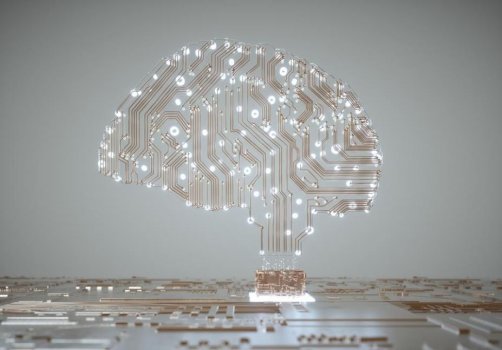Artificial intelligence (AI) has become a red-hot topic, with record levels of investment in “AI” companies and promises of capabilities that will revolutionize our lives. Many are puzzling through how AI can add value, and a growing number of vendors claim to be “AI-powered.” Given the buzz and rush to wrap the mantle of AI around any new technology, it makes sense to ask the basic question, “What exactly is AI?”
Start with the practical definition that artificial intelligence is any technology that tries to replicate some broader aspect of human intelligence. I emphasize “broader,” as that’s where a fair amount of confusion emerges. Think, for example, of the ability to perform arithmetic. Most people would agree that this capability is uniquely human. But I doubt anyone would conclude that a calculator is built on artificial intelligence.
It’s the broad capabilities that involve higher-order compound intelligence that makes the difference. Karen Hao’s freehand flow chart offers a great visual of the distinction that emerges around these more complex cognitive capabilities. One of the key elements is that AI does more than just capture data and perform a predetermined task. A camera cannot identify an object, and optical character recognition (OCR) cannot read a document. AI goes a step beyond this by applying some degree of “intelligence” to interpret the data and offer a next level of insight. But that’s still short of a far more complex and elusive element of human intelligence.
Continue reading: https://www.forbes.com/sites/forbestechcouncil/2021/10/07/what-is-artificial-intelligence/?sh=11e525e41890
Start with the practical definition that artificial intelligence is any technology that tries to replicate some broader aspect of human intelligence. I emphasize “broader,” as that’s where a fair amount of confusion emerges. Think, for example, of the ability to perform arithmetic. Most people would agree that this capability is uniquely human. But I doubt anyone would conclude that a calculator is built on artificial intelligence.
It’s the broad capabilities that involve higher-order compound intelligence that makes the difference. Karen Hao’s freehand flow chart offers a great visual of the distinction that emerges around these more complex cognitive capabilities. One of the key elements is that AI does more than just capture data and perform a predetermined task. A camera cannot identify an object, and optical character recognition (OCR) cannot read a document. AI goes a step beyond this by applying some degree of “intelligence” to interpret the data and offer a next level of insight. But that’s still short of a far more complex and elusive element of human intelligence.
Continue reading: https://www.forbes.com/sites/forbestechcouncil/2021/10/07/what-is-artificial-intelligence/?sh=11e525e41890

